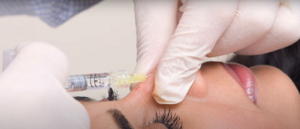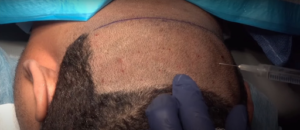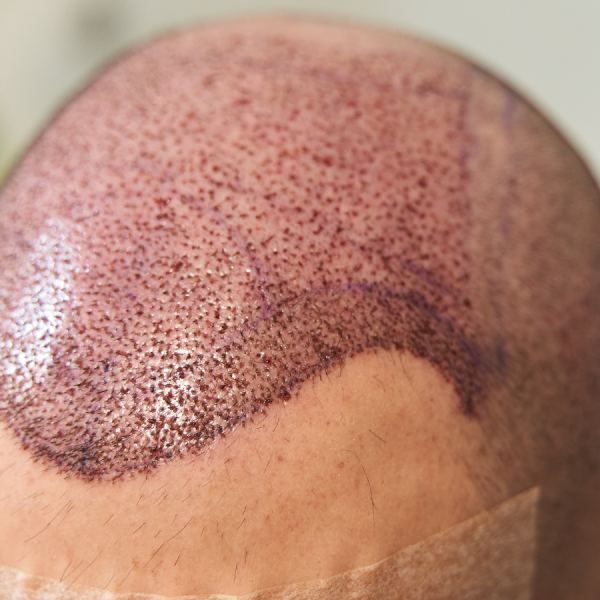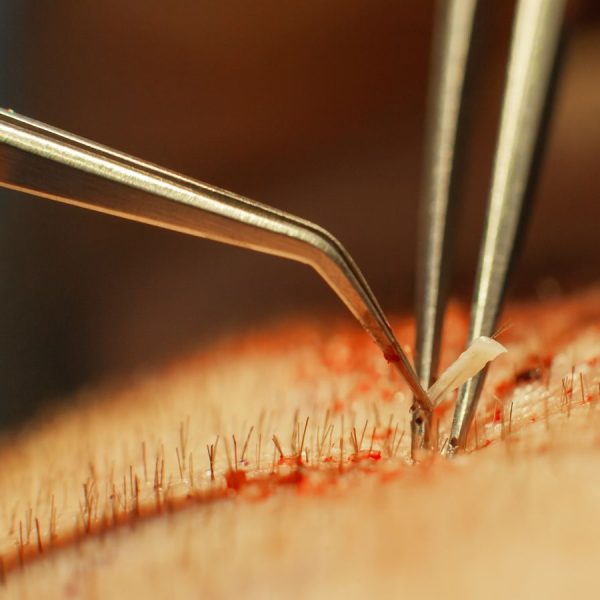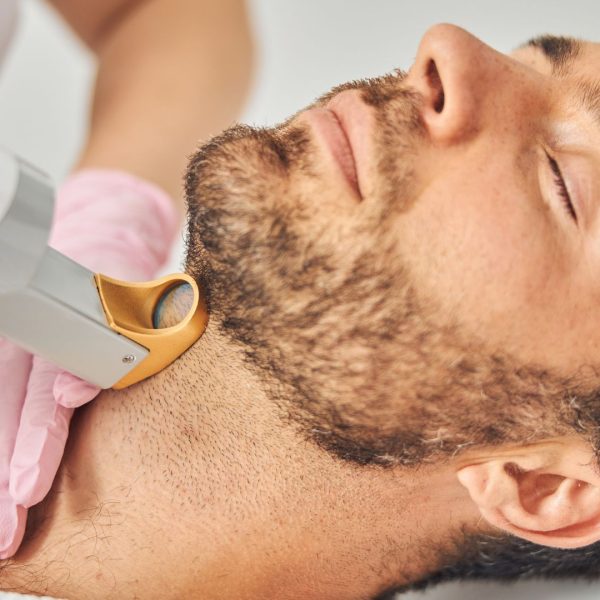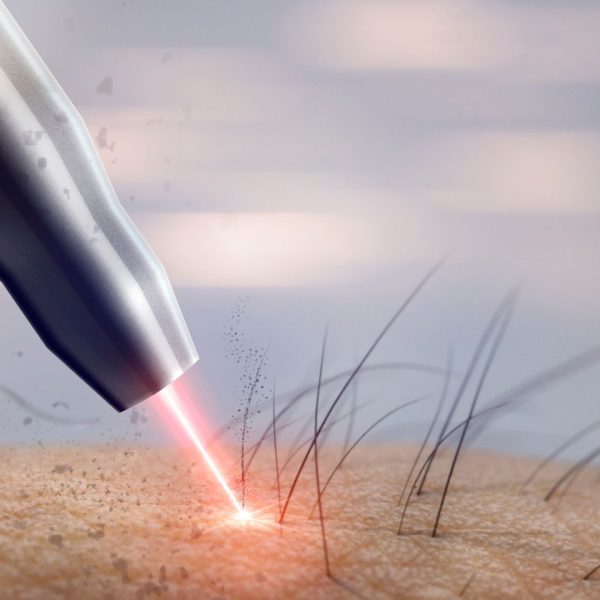Hair loss is a deeply personal and often distressing experience that can significantly impact an individual’s self-esteem and confidence. Whether caused by genetics, hormonal imbalances, medical conditions, or lifestyle factors, the emotional toll of losing one’s hair can be profound. Fortunately, advancements in hair transplant surgery have emerged as a beacon of hope for those grappling with hair loss, offering a path to renewed confidence and self-assurance.
In recent years, hair transplant surgery has undergone significant evolution, with innovative techniques and technologies reshaping the landscape of cosmetic procedures. These advancements have not only improved the efficacy and outcomes of hair restoration treatments but have also expanded the options available to individuals seeking to address their hair loss concerns.
In this blog, we will embark on a journey to explore the roots of renewal in hair transplant surgery, shedding light on the latest advancements and breakthroughs that are transforming the field. From traditional methods like follicular unit transplantation (FUT) to cutting-edge techniques such as follicular unit extraction (FUE) and robotic-assisted hair transplantation, we will delve into the diverse array of options available to individuals seeking to restore their hairline and regain their confidence.
One of the most significant advancements in hair transplant surgery is the refinement of FUE, a minimally invasive technique that involves harvesting individual follicular units from the donor area and transplanting them into the recipient site. This approach offers several advantages over traditional FUT methods, including faster recovery times, minimal scarring, and the ability to harvest grafts from various parts of the body. Additionally, robotic-assisted hair transplantation has emerged as a groundbreaking innovation, combining the precision of robotics with the expertise of skilled surgeons to achieve optimal graft placement and natural-looking results.
Beyond surgical techniques, the integration of platelet-rich plasma (PRP) therapy as an adjunctive treatment has further enhanced the outcomes of hair transplant surgery. PRP therapy involves extracting the patient’s blood, processing it to isolate the platelet-rich plasma, and injecting it into the scalp to stimulate hair growth and improve graft survival rates.
As we delve into the latest advancements in hair transplant surgery, it becomes evident that the field is undergoing a paradigm shift, offering new hope and possibilities to individuals struggling with hair loss. By exploring these innovative treatments and techniques, we can gain a deeper understanding of how hair transplant surgery is evolving to meet the diverse needs of patients and provide lasting solutions for restoring hair and confidence.
Deciphering Hair Transplant Procedures:
- Hair transplant surgery is a meticulously orchestrated process aimed at redistributing healthy hair follicles from donor sites to areas affected by hair loss or thinning. This intricate procedure offers a viable solution for individuals seeking to rejuvenate their hairline and reclaim their confidence. At the heart of hair transplantation lie two primary techniques: follicular unit transplantation (FUT) and follicular unit extraction (FUE).
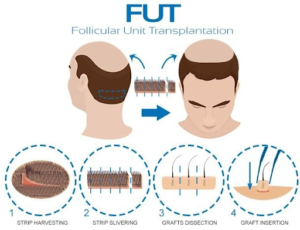
Follicular Unit Transplantation (FUT):
- FUT, also known as the strip method, involves removing a strip of scalp from the donor area, typically the back or sides of the head.
- The strip of scalp is then meticulously dissected into individual follicular units, each containing one to four hair follicles.
- These follicular units are carefully transplanted into recipient sites on the scalp, where hair growth is desired.
- While FUT can yield excellent results in terms of hair density and coverage, it may leave a linear scar at the donor site, which can be a concern for some patients.
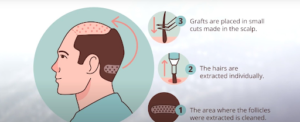
Follicular Unit Extraction (FUE):
- FUE is a minimally invasive technique that involves harvesting individual follicular units directly from the donor area using a small punch tool.
- This approach eliminates the need for a linear incision, resulting in less noticeable scarring and a quicker recovery time compared to FUT.
- With FUE, the donor area experiences tiny, circular scars that are typically less noticeable and can be concealed, making it a preferred choice for patients who wear their hair short or those concerned about visible scarring.
- While FUE may require more time and expertise due to the individual extraction of follicular units, it offers greater flexibility and precision in graft placement, resulting in natural-looking results.
Advancements in Hair Transplantation Techniques:
- Advancements in hair transplantation techniques have revolutionized the field, offering patients more natural-looking results and improved outcomes. One key innovation is the development of minimally invasive procedures such as follicular unit extraction (FUE) and robotic hair transplantation. FUE involves harvesting individual hair follicles from the donor area, typically the back of the scalp, and implanting them into the recipient area. This technique minimizes scarring and downtime, making it a popular choice among patients. Robotic hair transplantation utilizes advanced robotics to assist surgeons in the extraction and placement of hair follicles, allowing for greater precision and consistency in the procedure. Additionally, advancements in imaging technology have enabled surgeons to create detailed 3D maps of the scalp, aiding in the planning and execution of hair transplant procedures. These advancements have not only improved the aesthetic results of hair transplantation but also reduced the risk of complications and shortened recovery times, ultimately leading to a better overall patient experience.
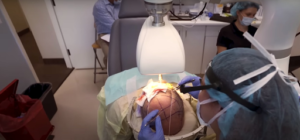
Robotic Hair Transplant:
- Utilization of robotic-assisted systems like the ARTAS system revolutionizes hair transplant procedures by incorporating artificial intelligence and robotics to automate the follicular unit extraction (FUE) process.
- These systems ensure precision and consistency in graft harvesting, significantly reducing the risk of human error and improving the overall quality of results.
- Robotic hair transplantation facilitates faster procedure times compared to traditional methods, leading to reduced surgery durations and enhanced patient comfort.
- With robotic assistance, surgeons can achieve more accurate graft placement, resulting in natural-looking hairlines and improved aesthetic outcomes.
- Patients undergoing robotic hair transplantation experience quicker recovery times, allowing them to return to their daily activities with minimal downtime and discomfort.
Platelet-Rich Plasma (PRP) Therapy:
- PRP therapy serves as a valuable adjunctive treatment to complement hair transplant surgery, aiming to enhance the overall outcomes.
- The process involves drawing a patient’s blood, which is then centrifuged to separate platelet-rich plasma, known for its high concentration of growth factors that stimulate tissue regeneration.
- During the hair transplant procedure, PRP is either injected directly into the scalp at the recipient site or applied topically to the area to promote hair follicle activity and expedite healing.
- PRP therapy contributes to improved graft survival rates by providing a nutrient-rich environment for transplanted hair follicles to thrive.
- Furthermore, PRP has been shown to decrease inflammation and accelerate the healing process post-transplant, leading to quicker recovery and improved overall satisfaction among patients.
Stem Cell Therapy:
- Emerging as a promising approach in hair restoration, stem cell therapy leverages the regenerative capabilities of stem cells to stimulate hair growth and combat hair loss.
- Stem cells utilized in this therapy can be sourced from various tissues, including adipose tissue (fat cells) or bone marrow, providing a rich reservoir of multipotent cells with the potential to differentiate into different cell types.
- The injected stem cells target the scalp, where they work to awaken dormant hair follicles and initiate the growth of new hair strands, thereby promoting overall hair regeneration.
- Ongoing research endeavors are dedicated to exploring the efficacy and safety of stem cell therapy for hair loss, with preliminary studies indicating encouraging outcomes in terms of improved hair density and thickness among treated individuals.
- Stem cell therapy holds promise not only for individuals experiencing genetic hair loss but also for those facing hair thinning due to factors such as aging, hormonal changes, or environmental stressors.
- As research progresses and technology advances, stem cell therapy is anticipated to become an increasingly viable option in the field of hair restoration, offering a potential long-term solution for individuals seeking effective interventions against hair loss.
The Future of Hair Transplantation:
The future of hair transplantation is poised to undergo remarkable advancements as technology continues to evolve at a rapid pace. With ongoing research and innovation, the landscape of hair transplant surgery is anticipated to offer even more promising solutions for individuals grappling with hair loss.
3D Printing Technology:
- Customized Hair Follicle Scaffolds: 3D printing technology facilitates the creation of personalized hair follicle scaffolds tailored to each patient’s unique scalp anatomy and hair loss pattern.
- Patient-Derived Hair Follicle Cells: These scaffolds can be populated with hair follicle cells derived from the patient’s own scalp, ensuring compatibility and reducing the risk of rejection.
- Natural-Looking Hair Growth Patterns: Implanted 3D-printed hair follicle scaffolds mimic the natural orientation and density of hair follicles, resulting in more natural-looking hair growth patterns.
- Addressing Transplantation Limitations: This innovative approach addresses the limitations of traditional transplantation techniques, such as limited donor hair availability and the risk of scarring, by offering a customizable and minimally invasive solution.
- Personalized Solutions: 3D-printed hair follicle implants offer personalized solutions for patients with varying degrees of hair loss, allowing for targeted restoration and improved aesthetic outcomes.
Gene Therapy:
- Targeting Underlying Genetic Factors: Gene therapy aims to address the underlying genetic factors contributing to hair loss by targeting specific genes associated with hair follicle development, maintenance, and function.
- Promoting Long-Lasting Hair Regrowth: By introducing therapeutic genes or modifying dysfunctional genes, gene therapy has the potential to promote long-lasting hair regrowth and halt the progression of hair loss.
- Experimental Stage: While still in the experimental stages, ongoing research in gene therapy for hair loss shows promising results, suggesting it may become a viable treatment option in the future.
- Precision and Targeted Approach: Gene therapy offers a precision and targeted approach to hair restoration, potentially minimizing side effects and optimizing treatment outcomes.
- Potential as a Future Treatment Option: With further advancements in gene editing techniques and a deeper understanding of the genetic basis of hair loss, gene therapy holds promise as a future treatment option for individuals seeking effective and sustainable solutions for hair restoration.

The roots of renewal in hair transplant surgery delve into a rich tapestry of innovation and technological progress, marking a transformative journey in the quest for effective solutions to hair loss. From the pioneering introduction of robotic-assisted procedures to the advent of regenerative therapies, the landscape of hair restoration has witnessed a profound evolution, offering patients a diverse array of options to rejuvenate their locks and bolster their self-assurance. As this field continues to burgeon with advancements, the horizon gleams with even brighter prospects for individuals grappling with hair loss. Through tailored and individualized treatment approaches coupled with state-of-the-art techniques, hair transplant surgery stands poised at the vanguard of transformation, poised to rewrite the narratives of countless individuals. By facilitating the restoration of not just hair but also confidence and vitality, these innovations promise to catalyze a profound metamorphosis, empowering individuals to reclaim their sense of self and stride forth into a future imbued with renewed optimism and self-assurance.


